Top 6 Most Beautiful Historical Sites in Uzbekistan
For generations, Western visitors have been drawn to the most beautiful historical sites in Uzbekistan. From Marco Polo to the Great Game spies, Uzbekistan was ... read more...always at the center of the intrigue, its towns the hubs of the great East-West interchange known as the Silk Road. However, for the majority of that time, only the most daring of travelers risking life and limb were able to see the huge gems connecting the caravan lanes. However, after the fall of the Soviet Union, Uzbekistan has welcomed foreigners.
-
With the exception of the capital Tashkent, which acts as a transportation hub, historical Samarkand is frequently the first stop for travelers to Uzbekistan. The two-hour high-speed train ride from Tashkent to Samarkand is half the time it takes to drive between the two cities.
Amir Timur, a 14th-century great general who constructed an empire encompassing Central Asia and Persia by slaughtering 17 million people, made Samarkand his capital. He was also an arts patron, catching artists along the road to leave a legacy in stone. The poor dead has been forgotten, but the gorgeous city has not.
At the heart of Samarkand lies the Registan complex of mosques and madrasahs (Islamic schools), which is covered with ceramic tiles and presided over by a clearly un-Islamic lion. From here, you can visit the massive Bibi Khanum mosque or the stunning Gur Emir mausoleum of Timur himself, which inspired the Taj Mahal, which was erected by Timur's descendants of the Mughal dynasty.
The Registan was the commercial heart of medieval Samarkand. Under the auspices of Ulugh Beg, the astronomer-king and Timur's grandson, it also became Samarkand's educational center in the 15th century, when he built a magnificent madrasah (the building to your left from the viewing platform) where he taught astronomy. The Ulugh Beg madrasah was considered at the time one of the top universities in the Muslim world.
The inherent magnificence of Ulugh Beg's architecture and ceramic tile coating balances its magnitude. Glazed green, turquoise, yellow, and blue are highlighted on a golden-brown background. Floral designs and Kufic calligraphy adorn mosaic and majolica panels. The centerpiece is a honeycomb muqarnas (a vaulted form of Islamic architecture) decoration that dazzles with its mathematical complexity.One of the inscriptions glorifying the adjacent Shir Dor (containing tigers) madrasah, built by Governor Yalangtush between 1619 and 1636, reads: "Never in all the centuries will an artist, thought's acrobat, even with the bow of phantasy, scale the forbidden peaks of this minaret." His architects attempted to emulate Ulugh Beg in scale and majesty, despite the fact that the Koranic ban against symmetry prohibited a precise mirror-image.
Shir Dor's décor is not as polished as that of the Ulugh Beg madrasah from the 15th century, which was the golden age of Timurid architecture. Nonetheless, the structure's harmony of vast and tiny chambers, superb mosaic décor, monumentality, and effective symmetry all position it among Samarkand's finest architectural masterpieces.
The lions and human-faced sun guarding the gateway represent a remarkable return to pre-Islamic Zoroastrian symbolism, reminiscent of Bukhara's Divanbegi madrassah.Yalangtush had a third madrasah built with a 75-meter-long extended facade to encompass the plaza in pleasant symmetry. By this time, the Bibi Khanum mosque was in ruins, and Tillya Kari was set to become the city's major mosque. Its name means "the golden one," and its spectacular interior is swathed in gold foil, in addition to a lavish mosaic feast mirroring the colors of the Shir Dor.
The Registan is so massive that it's worth visiting multiple times. Visit at different times of the day if possible. This will help you to notice various nuances and the play of light and shade in the muqarnas. The facility is open every day from 8 a.m. to 7 p.m., and admission is 30,000 som ($3.90).
City: Samarkand
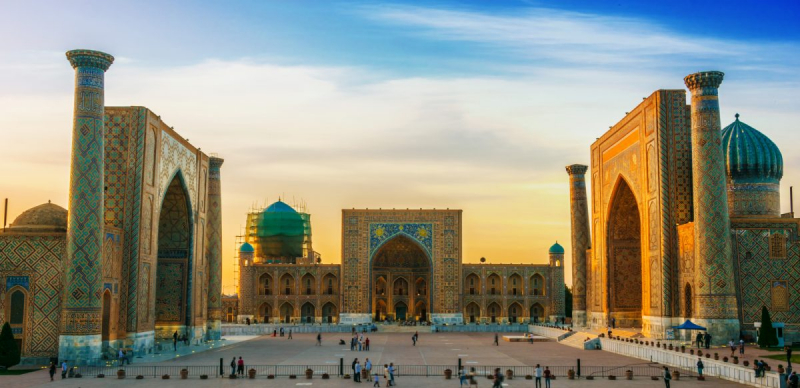
Samarkand's Registan square - Photo: horizonguides.com 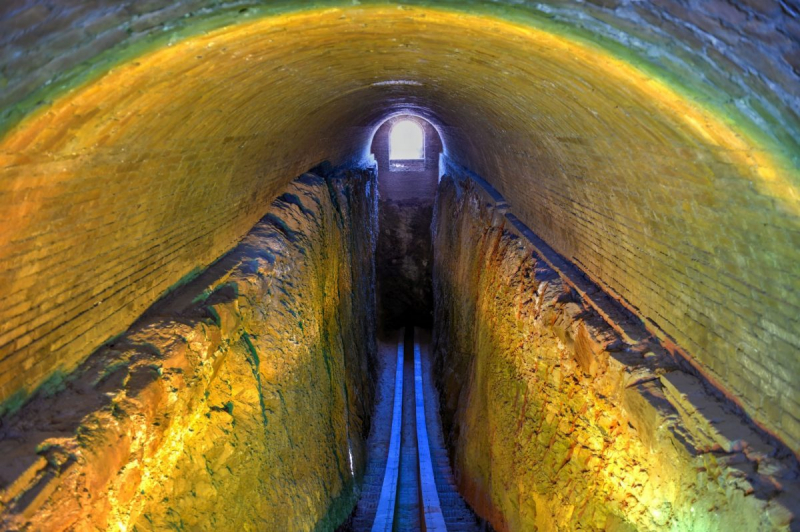
Ulugh Beg observatory in Samarkand - Photo: horizonguides.com -
Overlooking Samarkand stands another memorial to the dead: the Shah-i-Zinda tomb complex, the most atmospheric of Uzbekistan's majolica masterpieces. The complex tells the tale of Samarkand, from humble origins to the stunning heights of the Timurid empire, and was built to hold the graves of leaders and their kin from the 11th to the 19th centuries. The complex is one of the most beautiful historical sites in Uzbekistan.
Samarkand's holy site is a mausoleum necropolis. It evolved into an architectural proving ground in the 14th and 15th centuries, with an unrivaled celebration of ceramic art in Central Asia, making this street of the dead possibly the most visually spectacular site in Samarkand.
The name relates to its earliest, innermost and holiest shrine – a series of chilly, quiet rooms centered around what is most likely the grave of Qusam ibn-Abbas, a cousin of the Prophet Mohammed who is claimed to have brought Islam to this area in the 7th century.
The current form of Shah-i-Zinda emerged in the 14th century when Timur and subsequently Ulugh Beg buried their families and favorites besides the Living King.
Look for Amir Burunduk's 16-sided tomb, Ulugh Beg's octagonal mausoleum, and the magnificent Alim Nesefi Mausoleum, which features relief majolica tiles, eight-pointed stars, and the names of twelve Shi'ite imams inscribed.The sapphire blue tombs are part of Timur's female relatives' necropolis. The most exquisite mausoleum is the Shodi Mulk Oko Mausoleum (1372), which is the final resting place of Timur's beautiful young niece. The magnificent majolica and terracotta work in this room – note the miniscule amount of space between the tiles – was of such high quality that it required almost minimal restoration.
The tight corridors keep Shah-i-Zinda cool, so you may visit at any time of year, but come early in the morning to have the place to yourself. After seeing Shah-i-Zinda, make your way to Samarkand's city cemetery, where the most frequented burial is that of former strongman Islam Karimov, who governed the country with an iron fist for more than a quarter-century, claiming to be Timur's successor.
City: Samarkand
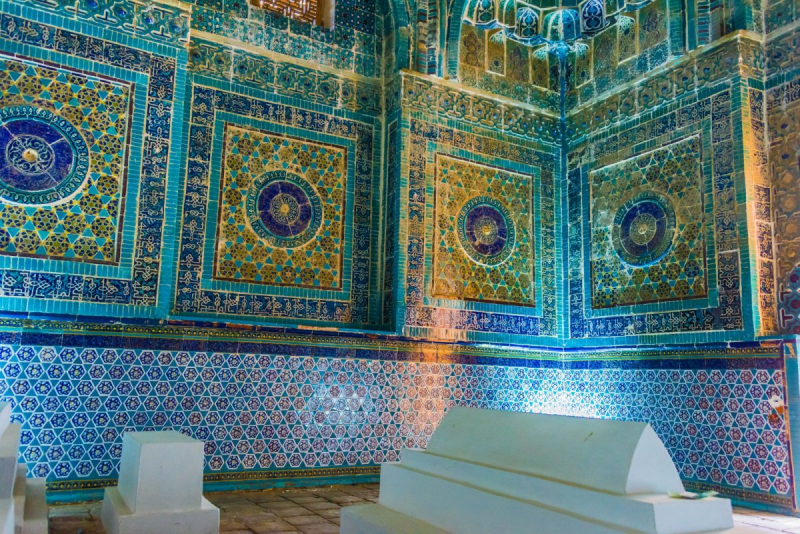
Inside the tomb in Shah-i-Zinda - Photo: horizonguides.com 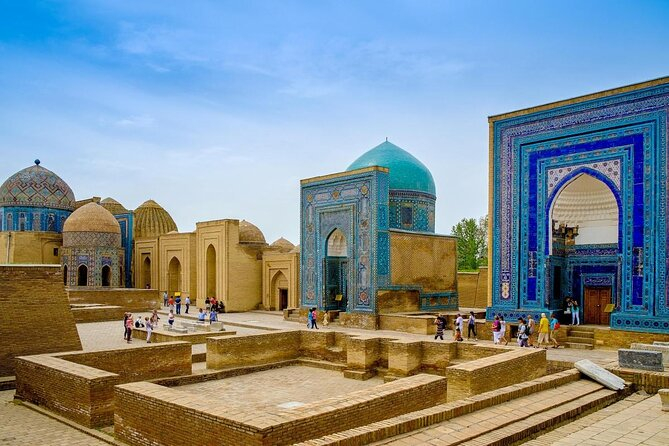
Photo: Viator -
The Po-i Kalan complex is Bukhara's spiritual core. The exquisite masonry of the Po-i Kalan minaret has stood since 1127, weathering earthquakes, cannonballs from the Red Army, and marauding marauders led by Genghis Khan. The Kalan mosque and the Mir-i Arab madrasah are mirror images of each other at the base of the 45-meter-high tower. The mosque was built on the foundation of an earlier mosque from the eighth century that was destroyed by Genghis Khan's troops.
Built-in 1514, this 'new' mosque served as Bukhara's largest mosque, accommodating up to 10,000 attendees. The Mosque was closed during the Soviet invasion and reopened to the faithful in 1991. The minaret cannot be climbed by tourists, and the madrasah is operational, with visitors only allowed within the main court to avoid disturbing the students, but the Kalan mosque is open to the public.
The octagonal pavilion in front of the mihrab, built in the nineteenth century, is an intriguing late addition to the mosque. Some believe it was built to shade the emir during his weekly visits, while others say it marks the ancient well that has been used for ages for ritual ablutions. It was most likely used as an early tannoy system, with a second imam echoing the first's words and movements for the congregation's benefit.
City: Bukhara
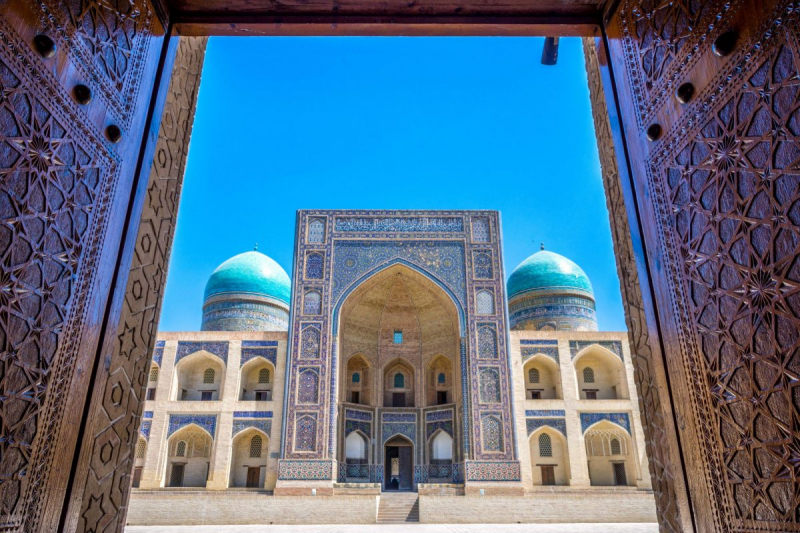
Mir-I-Arab madrasah, Bukhara - Photo: horizonguides.com 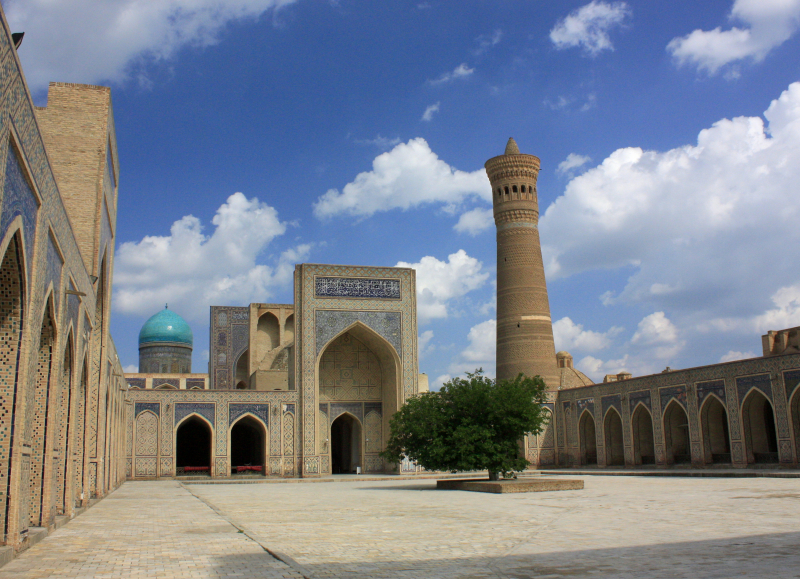
Photo: Wikipedia -
Another place on the list of the most beautiful historical sites in Uzbekistan is no other than Lyabi Hauz. A pond, or hauz, is at the heart of the Lyabi Hauz square. After the Soviet takeover, most of Bukhara's ponds were filled in, as they were the source of diseases that plagued the city's population. The Lyabi Hauz, on the other hand, has survived, maybe because it so wonderfully replicates the religious structures on three sides. The phoenixes attacked a Mongol-faced sun on the Divanbegi madrasah's exterior, while the adjoining khanqah (Sufi spiritual retreat) served as a dormitory for traveling dervishes passing through the city. In a rather gaudy green light, summer evenings offer performances and al fresco dining.
The 1,000-year-old Samanid mausoleum, the opulent residence of the last Emir, the Ark Fortress, and the relics of the legendary Bukhara Jews are just a few of the sights to see in Bukhara. Hundreds of old structures in central Bukhara are currently used as bathhouses, and businesses selling carpets, spices, and calligraphy.
To obtain a sense of authentic Bukharan life playing out amidst the ruins of days gone by, venture out of the center and into the narrow back streets. The crowds thin away quickly, and it's not long until you're dragged into a game by children or invited to tea. Accept the offer, and you'll get a glimpse behind the high gates of a traditional Uzbek multi-generational home.City: Bukhara
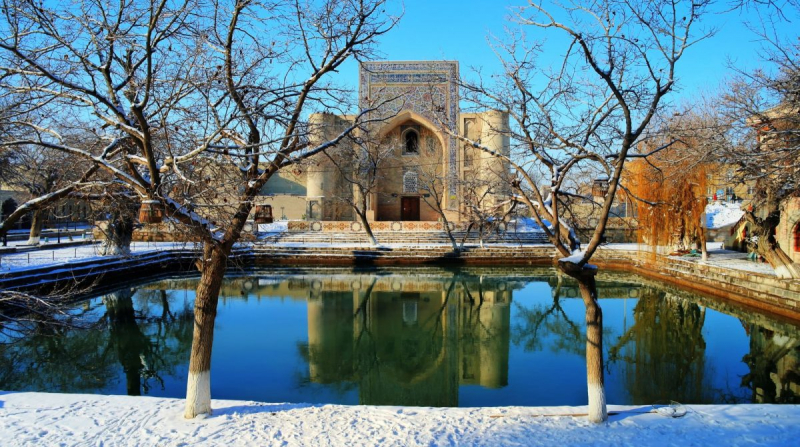
Lyabi Hauz square, Bukhara - Photo: horizonguides.com 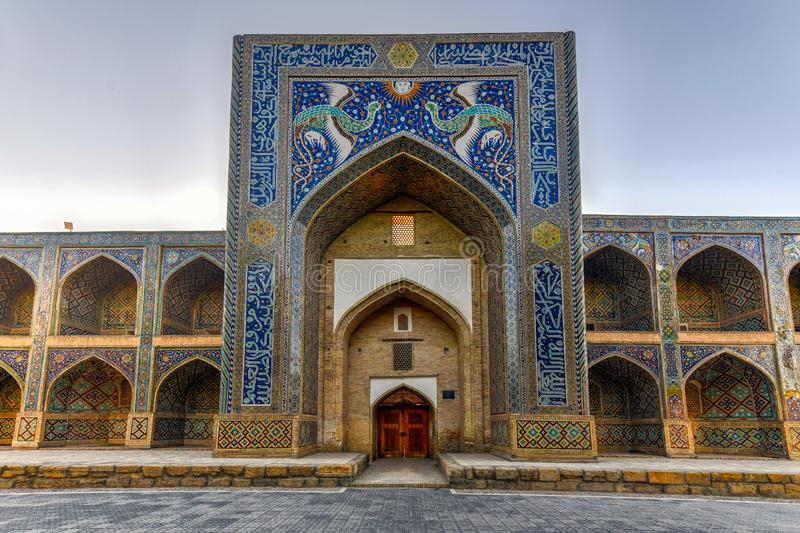
Photo: Dreamstime.com -
Within its mud-brick fortress walls, the little slave trader village of Khiva epitomizes the greatest of Central Asian architecture. Khiva remained out of reach for Russian colonial soldiers in the 19th century due to its isolated location in the Kyzylkum desert, ensuring that it was well-preserved.
The Kalta Minor minaret, which dates from the 19th century, was designed to challenge Bukhara's Kalan minaret. It remains unfinished, however, because the architect fled for fear of being assassinated by the khan. The pattern-glazed tiles in sparkling turquoise, white, and yellow make the minaret worth visiting more than the shape.
Khiva is a small city (population 90,000), thus it's worth researching deeper. The finest side excursion is to Khwarezm's desert fortresses: magnificent, lonely remains rising from the desolate floor, they were once prosperous settlements until the Amu Darya river's flow shifted, leaving them parched and lifeless.
City: Khiva
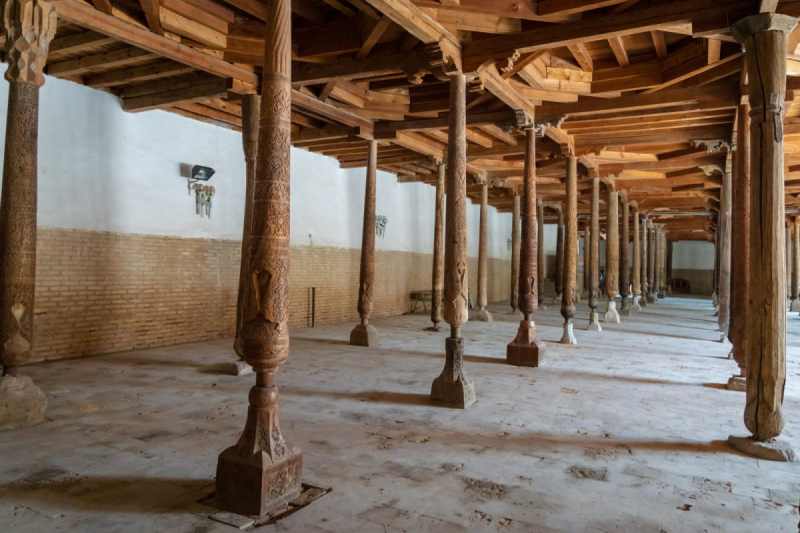
Carved pillars at Juma Mosque in Khiva Khiva - Photo: horizonguides.com 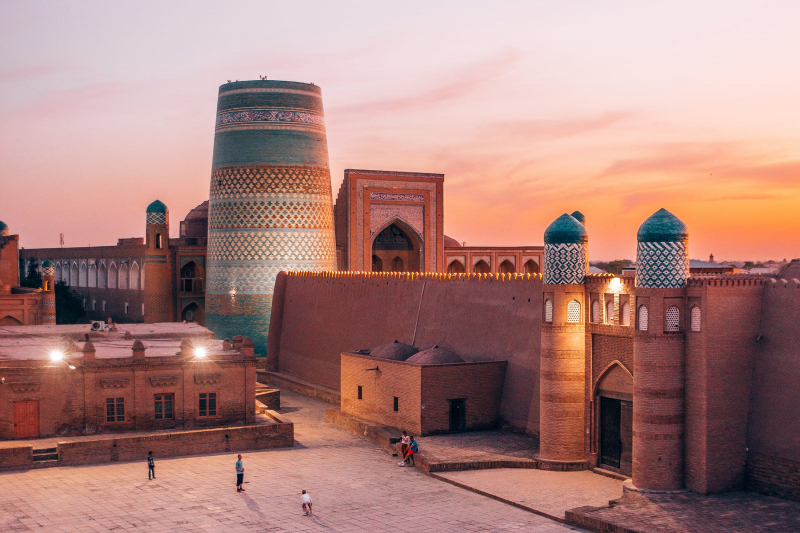
Photo: The Diary of a Nomad -
Museums are definitely the most beautiful historical sites in Uzbekistan. Tashkent was rebuilt after a disastrous earthquake in 1966 to serve as a "beacon of Soviet dominance in the East" that would "light the socialist path to wealth for Asia's neighboring peoples." Tashkent, a city created on a grand scale, is a remarkable mix of Oriental Brutalist architecture from the twentieth century, medieval mausoleums, and a fast-paced modern metropolis.
Apart from gigantic monuments, Tashkent is also a great spot to sample some good cuisine; for example, the capital's 100,000-strong Korean community guarantees that delicious Korean-Uzbek cuisine is easy to get by.
In Uzbekistan, just a few museums are worth visiting; Tashkent is one of them. The façade of the Fine Arts Museum is magnificent, but the inside is much more so, with an extraordinary collection of the finest silk, woodcarving, suzani weaving, pottery, and jewelry.
Tashkent's State Museum of History is another must-see, if only for the former Lenin museum's remarkable shape. It's the best place to learn about the country's rich and varied history (but bring a guide; the museum's English-language explainers aren't particularly useful). If at all feasible, visit the museum at the end of your journey: you'll get so much more out of the exhibits if you've visited the locations where they came from and grasp the historical background, not just intellectually, but emotionally.
City: Tashkent
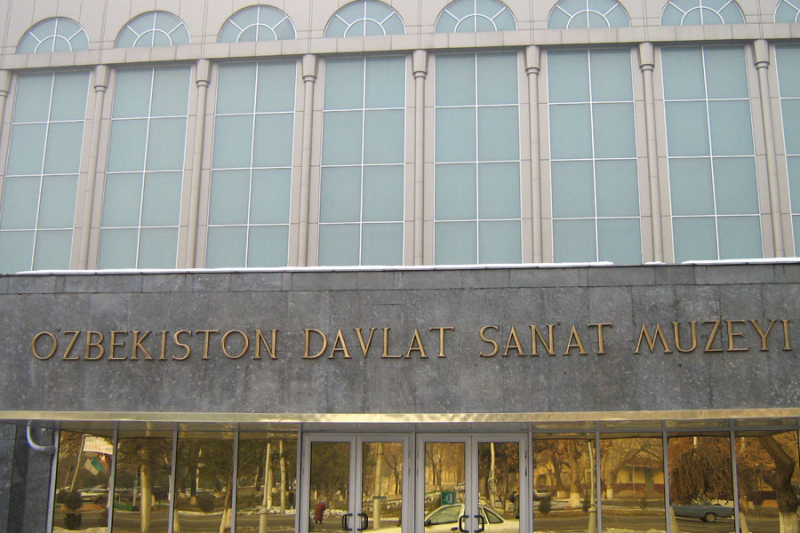
Fine Arts Museum of Uzbekistan - Photo: Advantour 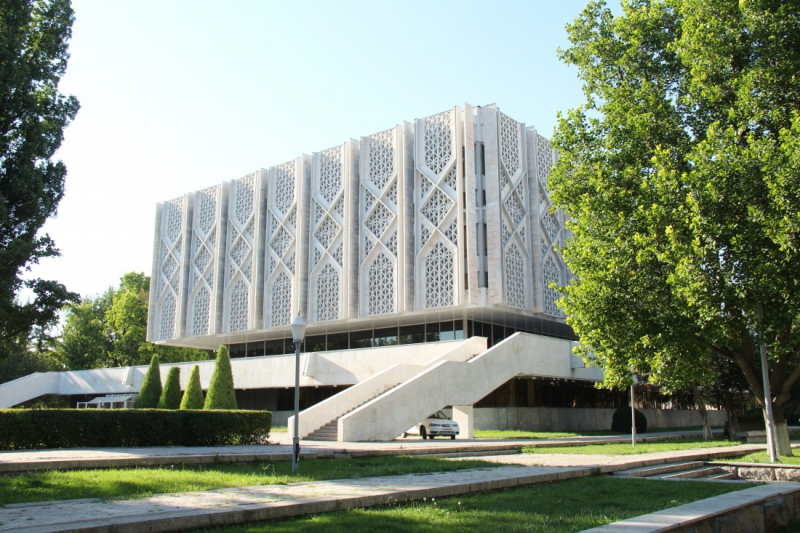
The State Museum of History - Photo: Uzbekistan Travel



























